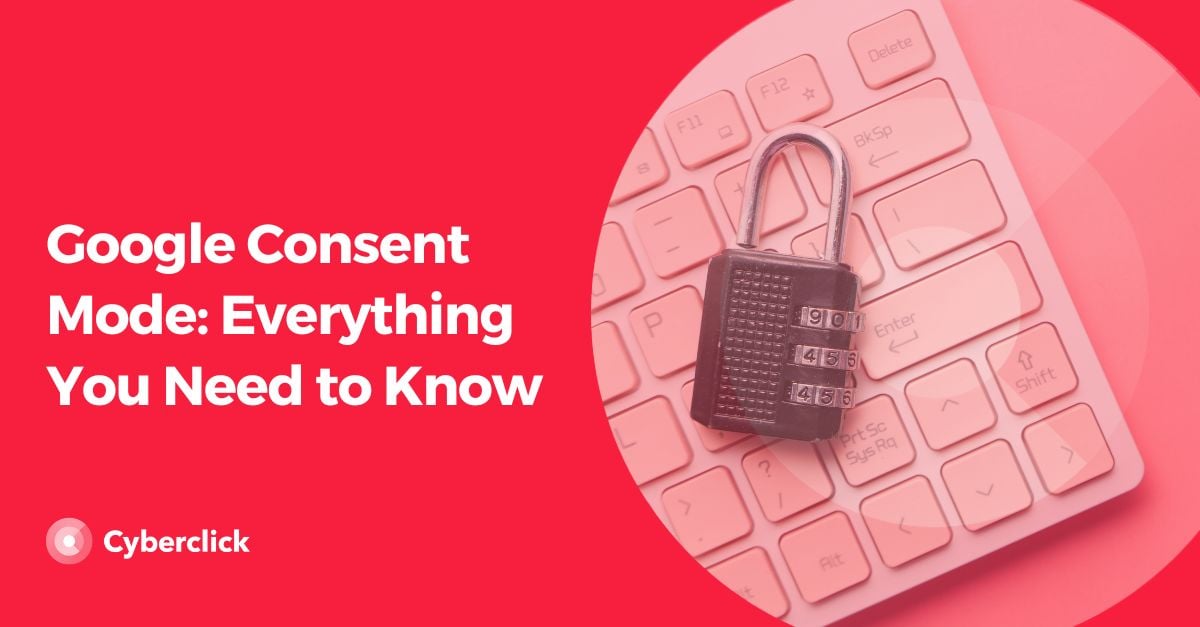Consent Mode V2 becomes mandatory with the introduction of the new Digital Markets Act, aimed at safeguarding user privacy and fostering fair competition, transparency, and innovation within online businesses, and the new ePrivacy regulation, which aims to protect user privacy in digital communications and transactions within the European Union.
Given the importance of user privacy and data protection, Consent Mode V2 becomes essential for any company advertising online. It is the only way to reach users who have consented to receive advertising, ensuring that their IP remains anonymous and their data has an extra layer of security when used for commercial purposes.
Consent Mode V2 introduces new consent signals such as "ad_user_data," where users acknowledge that their data may be used for advertising purposes, and "ad_personalization," where users consent to their data being used for remarketing. It also includes basic and advanced settings. In the basic setting, Google does not collect any information until the user gives consent, while in the advanced setting, Google collects information without personal identifiers before the user gives consent. This information includes connection time, country of origin, and browser type.

Differences Between Consent Mode V2 and the First Version
Google released a new version of Consent Mode due to the insufficiency of the first version in light of the new DMA and ePrivacy regulations. The new version includes two new consent signals, "ad_user_data" and "ad_personalization," and two types of configurations: basic and advanced.
Through "ad_user_data" and "ad_personalization," users affirm and accept the use of their data in advertising and remarketing strategies. The configurations allow Google to collect or not collect information before the user gives consent. However, without explicit user consent, the collected data will not contain any personal information.
It's worth noting that with the new version of Consent Mode, device identifiers disappear, making IPs anonymous, and third-party cookies vanish, limiting companies' ability to track and obtain user data.
All companies wishing to use Google's advertising tools must implement the new version of Consent Mode; otherwise, the display or remarketing functionality will not be accessible.
Configuring Google Consent Mode V2
To configure Google Consent Mode V2, take the following steps:
- Ensure that your website meets three requirements: It is present within the European Economic Area, has a consent banner that blocks tags, and has a Google tag installed.
- If your website meets the above requirements, install a Consent Management Platform (CMP) if you don't already have one. Alternatively, you can implement it through code on the page (Tag Manager). It's ideal to use a CMP certified by Google, as they facilitate the configuration of Consent Mode V2 and typically include a cookie banner and everything needed to comply with the new regulations. Verified CMPs are usually paid, although there are some offer free versions that may suffice depending on the type of website or application.
- Validate the implementation of the consent mode in Google Ads. This process may take up to seven days, so always check after this time.
Be cautious, as some tools like Cookiebot, Cookieyes, and Cookie Script may already have Google Consent Mode implemented by default. In these cases, no further action is necessary.
How Will Consent Mode V2 Affect Web Analytics?
One of the concerns surrounding the new Consent Mode V2 is its impact on web analytics. Initially, data analysis may become more complex. With the removal of cookies, discrepancies between Google Analytics and other tools or platforms may increase, rendering data less accurate. Perhaps data should now be considered as estimated values rather than relied upon entirely.
It's important to note that companies not using cookies for advertising may experience lower performance compared to those who do. Therefore, strategies will need to evolve and adapt to this new landscape.
Graduado en Telecomunicaciones y Doctor en Fotónica por el Instituto de Ciencias Fotónicas. Cuenta con más de 5 años de experiencia trabajando con Google Ads y Google Analytics, gestionando estrategias de SEM y todo tipo de campañas a través del embudo, desde búsqueda hasta Youtube.
Graduated with a degree in telecommunications and holds a PhD in photonics from the Institute of Photonic Sciences. He has more than 5 years of experience working with Google Ads and Google Analytics, managing SEM, and all campaigns type across the funnel from search to Youtube.






Leave your comment and join the conversation